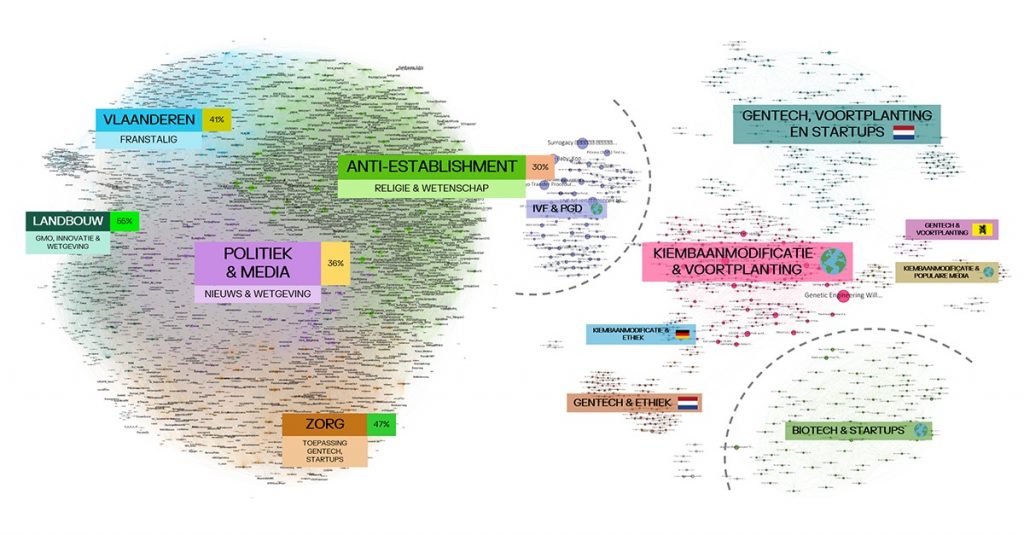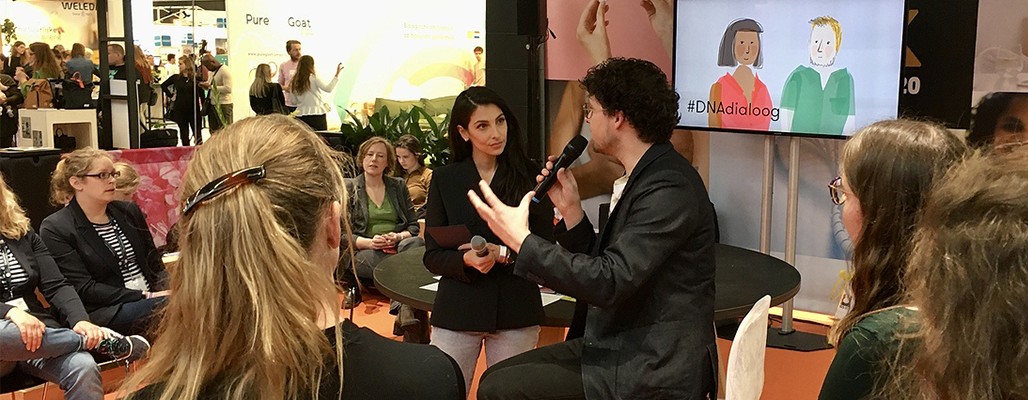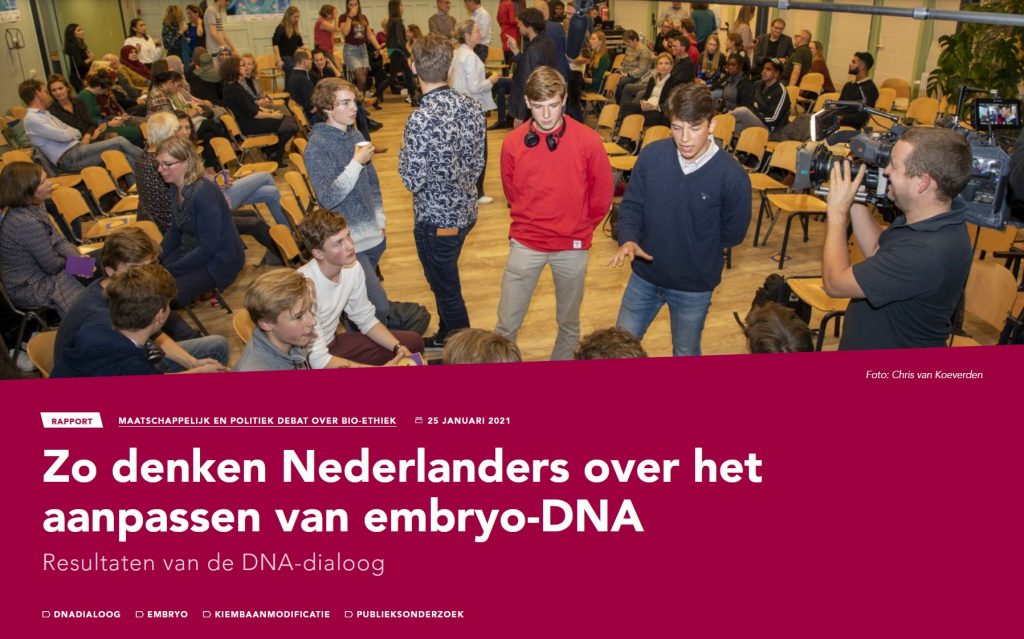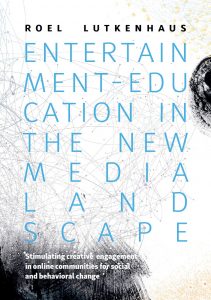Organizing an online societal dialogue about DNA technology
— Center for Media & Health; the Dutch Ministry of Health, Welfare and Sport
In 2018, the world was shocked by Chinese biophysicist He Jankui: he had just announced the birth of Lulu and Nana – the world’s first babies with modified DNA. A controversial breakthrough: do we really want to change the genes of human embryos?
Most DNA experts believe that we, as a society, should have a good discussion about it. In 2019, the Dutch Ministry of Health, Welfare and Sport kicked off the national DNA dialogue, organized by the Rathenau Institute, NEMO Kennislink, the Center for Media & Health, and other organizations. For his doctoral dissertation, Roel – the founder of New Momentum – investigated the possibility to extend the DNA Dialogue to the Internet. One year later, New Momentum investigated to what extent this had been successful.

Friction
In 2019, the online communities on YouTube, Twitter and the open web where genetic technology were discussed were mapped out. None of the communities specifically focused on CRISPR-Cas 9 – the technology that is used to edit human DNA. However, the communities did appear to be homogeneous groups that approached the wider topic of genetic engineering from the same angle, such as politicians, media companies, scientists, healthcare professionals, and the agricultural sector.
Among groups where involvement was relatively low, such as the anti-establishment on YouTube and Twitter, we saw that little distinction was made between different forms of genetic engineering. Among other groups, such as online communities around popular media, CRISPR-Cas 9 was not a topic at all.


Momentum
The aim of the DNA Dialogue was to start a societal dialogue that would reach and involve as many social groups as possible. To achieve this, we supplied lists of popular YouTube channels, Twitter users and websites from our research to kickstart the dialogue – also in communities where there was little (direct) interest in genetic technology. Among other things, we recommended using popular movies and books (e.g.: Jurassic Park, Gattaca, Sapiens) to bring the theme to the attention of a larger audience. We also recommended pairing popular vloggers with scientists to create accessible items about genetic engineering.
Ultimately, the DNA Dialogue consisted of public dialogues at events and festivals where citizens talked to each other. For example, we collaborated with scientists such as Marc van Mil and influencers such as Anna Nooshin to bring the theme to the attention of less obvious groups.
‘The DNA Dialogue succeeded in puttingh genetic technology on the agenda among fashion and lifestyle communities’
— The Rathenau Institute in their report about the DNA Dialoog

Picture: Lianne Tijhaar, Nemo Kennislink

Form
The evaluation show that during the DNA dialogue there was more online attention for genetic technology. Target groups were reached and involved in particular via YouTube, such as fashion and lifestyle communities. Furthermore, the DNA dialogue has resulted in lively online conversations within communities around science, healthcare and health, education, fashion and lifestyle, pregnancy, Christianity, research into diseases, festivals, podcasts and biohacking.
Results
Links and media
— The results of the DNA Dialogue in the report by the Rathenau Institute: ‘This is how Dutch people think about editing the DNA of human embryos‘

— Read the chapter about the DNA Dialogue in the dissertation ‘Entertainment-Education in the New Media Landscape‘

